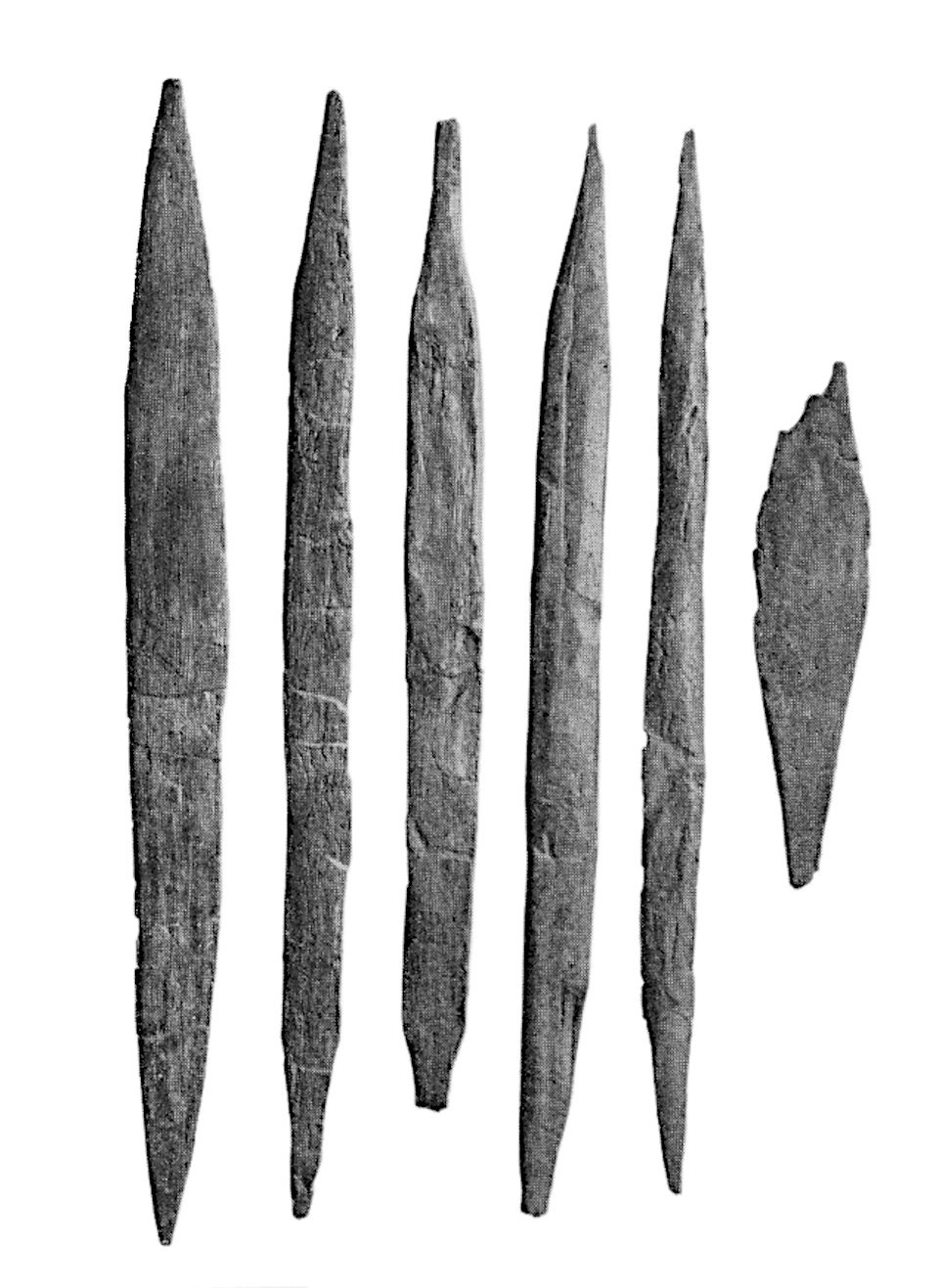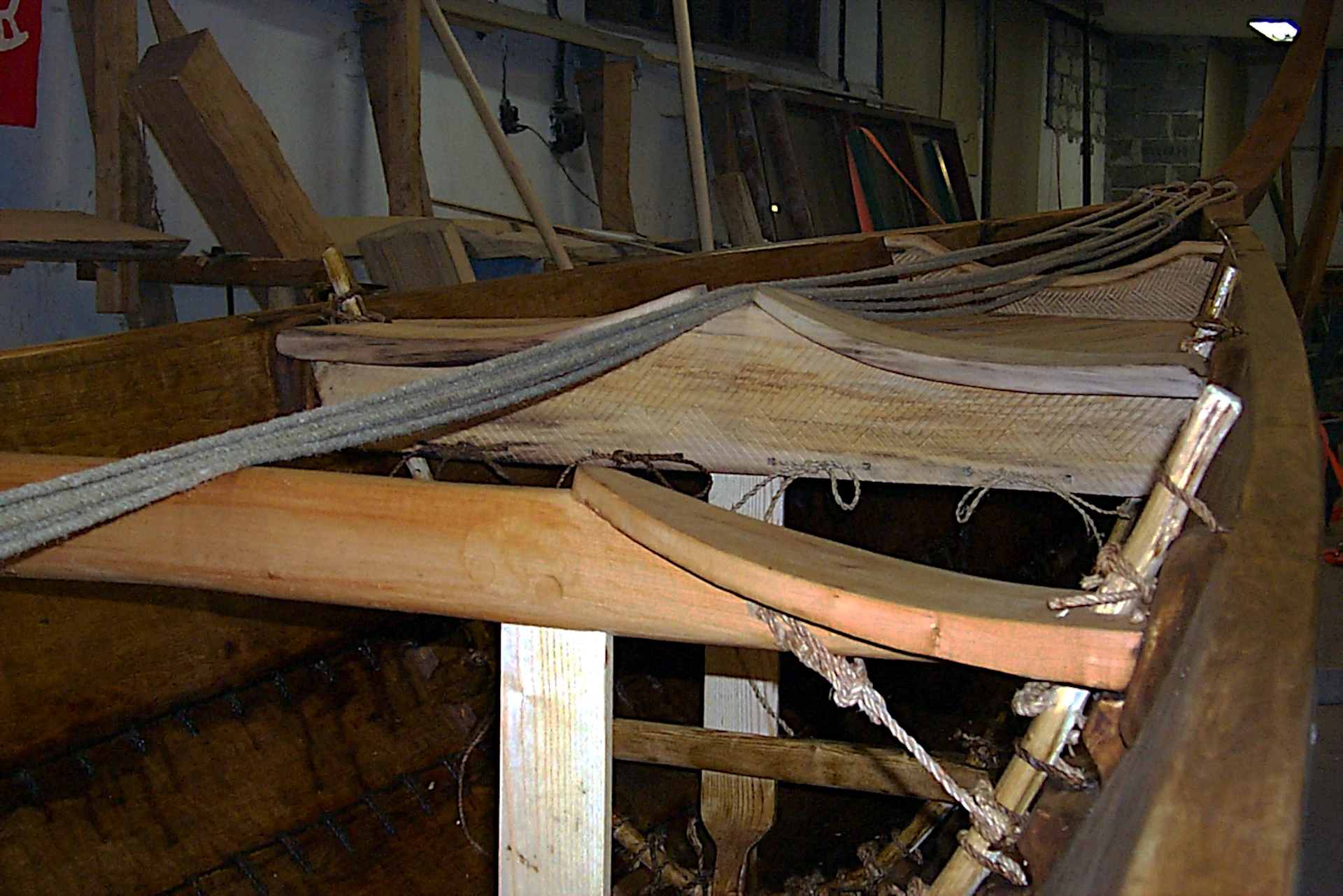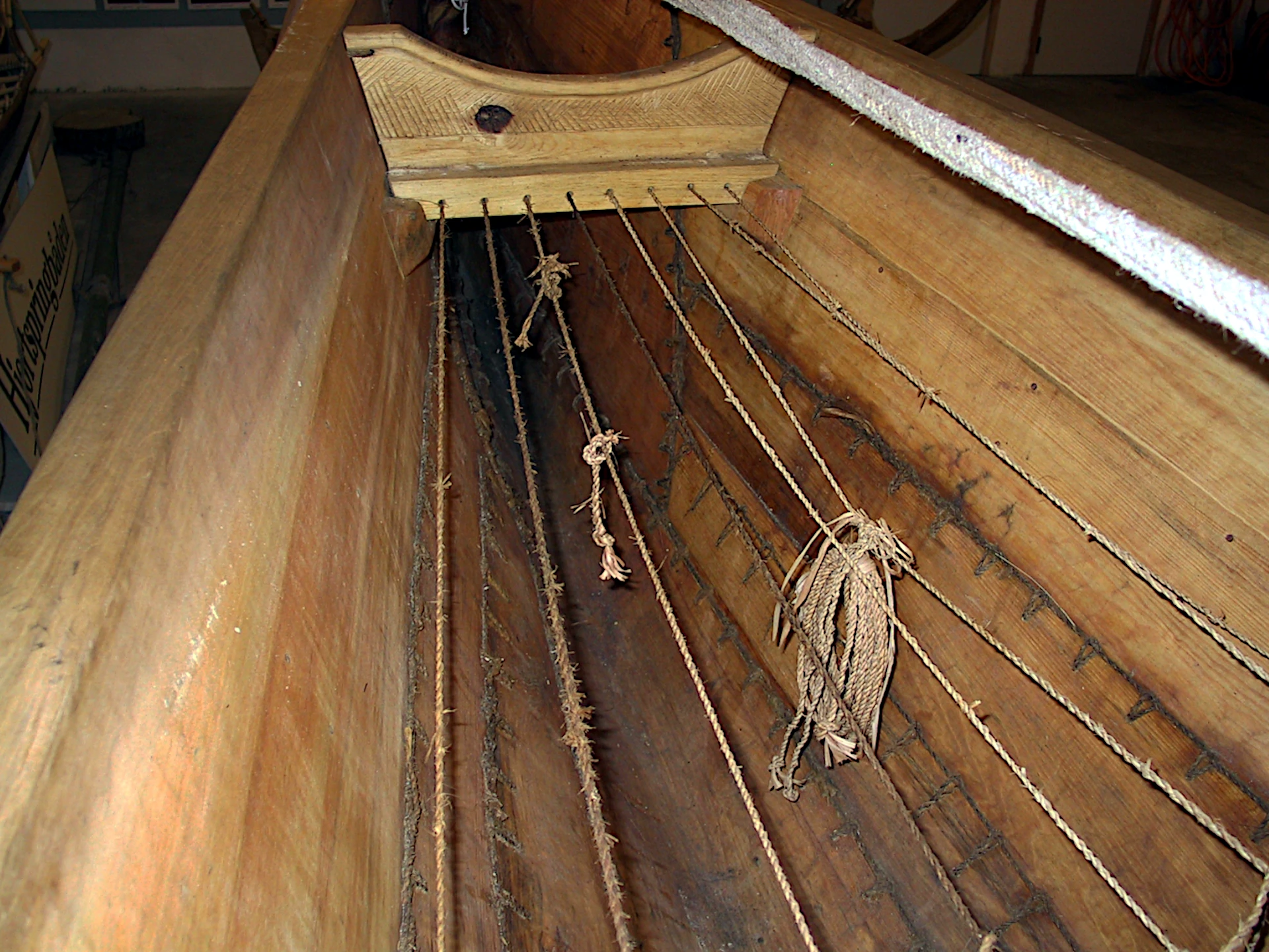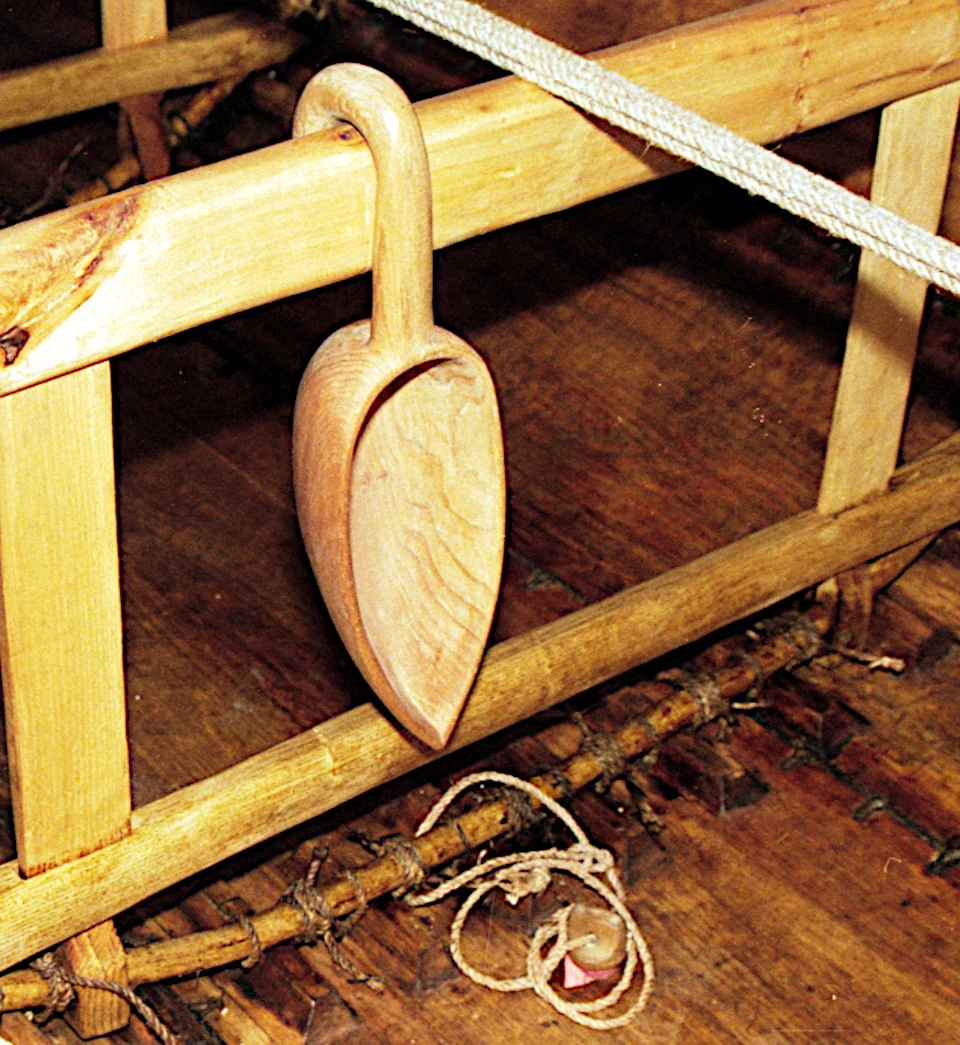Framing systems
The boat is equipped with ten frame systems spaced one metre apart. Each frame system contains a thwart with two seats for paddlers. The seats are cut out as part of the thwart-beam. The seats are similar in shape and dimensions in frames 2-10, while frame 1 (the rearmost) is cut out as part of the front frame of the small deck. The seats form an arch, sloping slightly towards the railing so that each paddler's body slopes outwards. The thwart-beams are made of lime wood.
The centre piece of the thwart-beam itself is shaped like a vertical ellipse, a shape that provides great strength for a low weight. As mentioned, we chose to let the thwart-beam rest on the second highest cleat, and let the upper arched cleat prevent the thwart from moving forwards or backwards.
The seats of the tofts are pierced by a 30 mm hazel branch, part of the frame, which is lashed to the cleats of the planks around the entire periphery of the boat cross-section. The thwarts are supported by vertical, flat ash columns that are embedded in the thwart-beams, run through a cut-out in the deck beam and are pierced by the hazel branch at the bottom.
The drawing shows the essential dimensions.
The hazel branch itself is weak and does not reinforce the planks. However, where the ends of the thwarts, column and deck plank rest on the hazel branch, it can transfer forces from these elements to the two cleats on either side of the end of the element and through them to the plank.
The elements of the rib systems are not attached to each other or to the hazel branch, and the rib system feels loose until the web has been lashed to all the cleats of the planks.
Some hypotheses are indicated in the drawing. First of all, the square hole across the top just below the seat is interpreted as an anchor for a turnbuckle that holds the top down. Without this, the top tended to slip up. The hole was also chosen as an attachment for a transverse cord that could carry poles, spears and the like to prevent them from falling into the inevitable bottom water.
Floorboards or decks
The find contained approximately 85 boards of linden wood with a length of 110-120 cm, a width of 6-10 cm and a thickness of 1.5-2 cm. They were tapered at the ends over a length of 10-20 cm. Rosenberg suggested that they should be used as floorboards to be inserted under the wraps and protect the seams from being stepped on.
We suggested a different use for the boards. There was a need for a flat, stable area where paddlers could support their feet while sailing and paddling. So we placed the boards on top of the deck beams outside the pillars and lashed them in place. They formed a ring deck that would prove useful for the purpose. The rest of the boards were also lashed to the deck beams inside the columns, forming a deck where the crew could place their private goods and keep them away from the bottom water.
The idea of covering the seams with the boards was rejected, as we would rather step on the seams with bare feet or soft moccasins than on wooden strips that would gnaw on the seams.
These hypotheses had to be proved or disproved during the test sailings.
The actual laying of such boards can be seen in the article on the deck.
The small deck
From frame 1 (the aft) and aft over a length of 120 cm, Rosenberg and Johannessen had placed a heavy, trapezoidal wooden plate in two parts. It was placed as a small half-deck almost in the plane of the rail and is called a 'løfting'. Various pieces of wood with decorations were interpreted to be pieces of sills that completed the front and rear of the 'løfting'. The front frame contained seats for the paddlers at frame 1. Based on Johannesen's drawing and the latest interpretation when the Hjortspring boat was displayed at the National Museum in 1988, we manufactured and assembled the 'løfting' arrangement.
Bottom plug
As mentioned in the history of the find, a plank had been extracted during peat digging in the 1880s and later dried and burned. It is believed that this plank came from the centre part of the bottom plank. What makes this interesting is that a bottom plug was not found, but was thought to be necessary when the boat was on land, hauled up after a voyage or on land during a rainstorm.
We made a bottom plug after finding one in Hedeby (from a Viking ship) and fitted it between frames 5 and 6, amidships. This space between the frames was not covered with deck boards, so that it was possible to remove the bottom plug and otherwise scoop while sailing.








